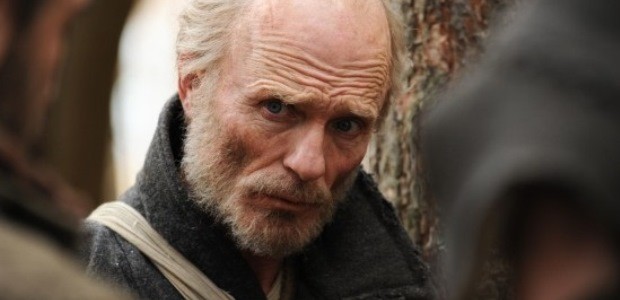1939 – Poland is divided between Hitler’s forces from the West and Stalin’s red army from the East. A Polish soldier on the Russian front, Janusz (Jim Sturgess) is betrayed by his wife and sentenced to 20 years, having allegedly spied for foreign powers. Imprisoned in the Siberian Gulag or high security Soviet POW labor camp, Janusz first meets inmate Khabarov (Mark Strong) who has devised a plan to escape. Over the following two years, Janusz befriends a small group of inmates who would eventually aid in his and their escape from the Gulag.
1941 – Seven inmates escape from the high security Gulag. The convicts include Janusz, an American engineer, Mr. Smith (Ed Harris), Valka (Colin Farrell) a hardened thug, and four others, an artist who can cook, a Pole with night blindness, a priest and an accountant with a sense of humor. Escaping from a POW camp surrounded by guns, dogs and barbed wire was the easy part. What lie ahead is the harshest elements of nature, starting with five million square kilometers of bitter cold Siberian landscape, an unforgiving desert and a second onslaught of frozen mountains through the Himalayas. Over and above, they endure this journey with dwindling supply of food and water, while avoiding contact or help from locales for fear of getting caught. Along the way they pick up a young woman on the run from her past, this despite the fact that she can slow down their escape to freedom. Of the seven escapees plus the young woman they take along (Saoirse Ronan as Irena), only three will arrive in India, 4000 miles from the Gulag, and all on foot.
Adapted from The Long Walk, a book that sold half a million copies and written by Sławomir Rawicz, this is a powerful film that tells an epic story; a story that is inspired by actual events during Rawicz’s alleged escape from the Gulag. Historically, the facts remain murky as others have claimed to have escaped from the Gulag, whereas Rawicz was supposedly released by the USSR. Having also co-written the screenplay, six Oscar nominated director Peter Weir claims that such an escape exists as archives in Polish museums in London, England and Stanford University in California. Aside from Rawicz’s book, part of the script is also inspired from autobiographies of some of the fugitives, titled and verified in English as Shallow Graves in Siberia.
Facts and debates aside, this is an exceptional film that captures the human spirit in surviving against all odds. Although seven men had their own ideas of freedom beyond escape, only three were noted to have made it to their destination. This is either testament of Darwin’s theory of ‘survival of the fittest’ or of something far more profound — that humans as a species are capable of anything we set our hearts and minds on. From the filming perspective, I am satisfied with almost all aspects of the production. Acting is top notch from everyone including the European actors. While Sturgess and Harris are very convincing, Colin Farrell and Dragoş Bucur offer some comic relief in well punctuated spots. As Irena, Ronan is a welcome addition to the posse of fugitives while her acting says she has clearly progressed from a child actor and looks powerfully ready for bigger and central roles.
Co-produced by ImageNation Abu Dhabi, with filming on locations in Bulgaria, Morocco and India, the highlight of the film is the sweeping cinematography. No wonder then, because National Geographic has had a hand in the production as well. Photography is breathless and places the viewer right in the middle of the Siberian cold or dehydrating heat of the desert. While illustrating these terrible hardships for the characters, make-up is terrifying and realistic. For the acting, directing, screenplay, cinematography and general production, Peter Weir should be credited for this phenomenal piece of work. Running at over two hours, I do feel that Weir could have built more depth into some of the characters given that many scenes are dialogue heavy. But as a standalone production, The Way Back is ample proof that given the right focus and vision, Independent films have as big a scope in powerful film making as compared to films backed by major production and distribution studios.
Rating: 




